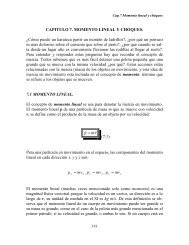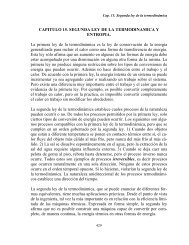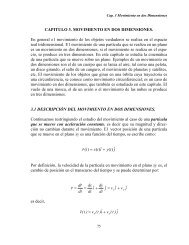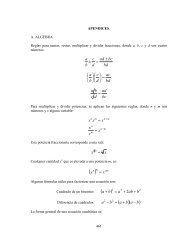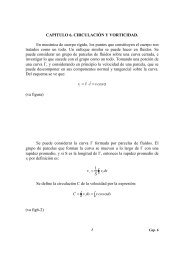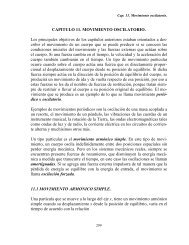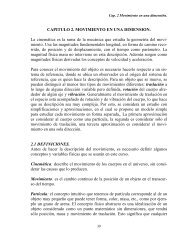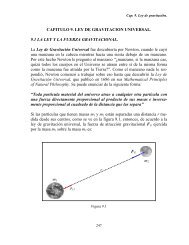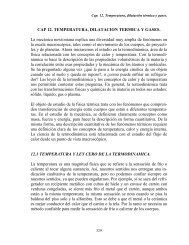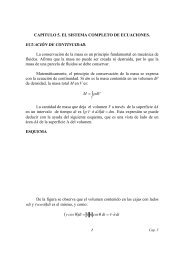Seasonal Diagnostic and Predictability of Rainfall in Subtropical ...
Seasonal Diagnostic and Predictability of Rainfall in Subtropical ...
Seasonal Diagnostic and Predictability of Rainfall in Subtropical ...
You also want an ePaper? Increase the reach of your titles
YUMPU automatically turns print PDFs into web optimized ePapers that Google loves.
15 FEBRUARY 2000 MONTECINOS ET AL.<br />
747<br />
FIG. 1. Bimonthly ra<strong>in</strong>fall climatology (left panels) dur<strong>in</strong>g 1947–86, <strong>and</strong> monthly differences dur<strong>in</strong>g each bimonthly <strong>in</strong>terval (right panels):<br />
Jan–Feb, Mar–Apr, May–Jun, Jul–Aug, Sep–Oct, Nov–Dec. Symbols are described at the bottom <strong>of</strong> the figure.<br />
term averages <strong>and</strong> ra<strong>in</strong>fall changes dur<strong>in</strong>g nonoverlapp<strong>in</strong>g<br />
bimonthly <strong>in</strong>tervals. Four sectors with ra<strong>in</strong>fall hav<strong>in</strong>g<br />
a relatively homogeneous annual cycle are identified:<br />
the Pacific coastal b<strong>and</strong> (central Chile), the<br />
cont<strong>in</strong>ental strip on the east side <strong>of</strong> the Andes (70–<br />
65W), the central cont<strong>in</strong>ental strip (65–60W), <strong>and</strong> the<br />
Atlantic b<strong>and</strong> east <strong>of</strong> 60W.<br />
1) Pacific b<strong>and</strong> (central Chile): This sector corresponds<br />
to the narrow cont<strong>in</strong>ental strip between the Pacific<br />
coast <strong>and</strong> the Andes Mounta<strong>in</strong>s. There is a welldef<strong>in</strong>ed<br />
contrast between the extreme <strong>and</strong> permanent<br />
arid conditions prevail<strong>in</strong>g <strong>in</strong> the northern sector <strong>and</strong><br />
the wetter conditions <strong>in</strong> the south. Although there is<br />
some <strong>in</strong>crease <strong>in</strong> ra<strong>in</strong>fall from February to March,<br />
the largest seasonal <strong>in</strong>crease occurs between April<br />
<strong>and</strong> May. From June to July the change <strong>in</strong> ra<strong>in</strong>fall<br />
is relatively small, although a slight <strong>in</strong>crease is observed<br />
northward <strong>of</strong> approximately 33S <strong>and</strong> a decrease<br />
<strong>in</strong> the region to the south <strong>of</strong> this latitude. The<br />
significant decrease <strong>in</strong> ra<strong>in</strong>fall dur<strong>in</strong>g August–September<br />
<strong>in</strong>dicates the end <strong>of</strong> the wet season.<br />
2) Cont<strong>in</strong>ental strip eastward from the Andes (70–<br />
65W): The region east <strong>of</strong> the Andes is relatively<br />
dry. This is partially due to the ra<strong>in</strong> shadow effect<br />
<strong>of</strong> the Andes, associated with the midlatitude westerly<br />
flow. The meridional variation <strong>of</strong> ra<strong>in</strong>fall <strong>and</strong><br />
its seasonality are broadly opposite to those described<br />
for Chile. Accord<strong>in</strong>gly, Fig. 1 shows that<br />
ra<strong>in</strong>fall <strong>in</strong>creases from September to January. In the<br />
southern portion <strong>of</strong> this region, relatively dry conditions<br />
prevail throughout the year (average ra<strong>in</strong>fall<br />
less than 50 mm <strong>in</strong> each bimonthly period).<br />
3) Central cont<strong>in</strong>ental strip (65–60W): Here, the annual<br />
cycle <strong>of</strong> ra<strong>in</strong>fall is characterized by a m<strong>in</strong>imum<br />
dur<strong>in</strong>g w<strong>in</strong>ter (May–August) <strong>and</strong> a maximum dur<strong>in</strong>g<br />
summer <strong>and</strong> early fall (January–April). The slow <strong>in</strong>crease<br />
<strong>in</strong> ra<strong>in</strong>fall observed dur<strong>in</strong>g the summer semester<br />
ends <strong>in</strong> March <strong>and</strong> it is followed by a relatively<br />
fast decrease dur<strong>in</strong>g April <strong>and</strong> May.<br />
4) Atlantic b<strong>and</strong> east <strong>of</strong> 60W: This region <strong>in</strong>cludes the<br />
southern part <strong>of</strong> Paraguay, southern Brazil, Uruguay,<br />
<strong>and</strong> the pampas sector <strong>of</strong> eastern Argent<strong>in</strong>a. Although<br />
precipitation is larger <strong>in</strong> the northern sector,<br />
the entire region is characterized by a relatively flat<br />
annual cycle with bimonthly ra<strong>in</strong>fall exceed<strong>in</strong>g 100<br />
mm dur<strong>in</strong>g the entire year. The seasonal changes <strong>in</strong><br />
ra<strong>in</strong>fall show some dist<strong>in</strong>ct features, such as the relatively<br />
large <strong>in</strong>crease dur<strong>in</strong>g the transition from w<strong>in</strong>ter<br />
to spr<strong>in</strong>g (August–September) <strong>in</strong> the northern sector<br />
<strong>of</strong> the region (southern Brazil, southern Paraguay,<br />
<strong>and</strong> northeastern Argent<strong>in</strong>a), which is followed by a<br />
decrease dur<strong>in</strong>g spr<strong>in</strong>g (October–November), <strong>in</strong> contrast<br />
with the overall <strong>in</strong>crease observed elsewhere <strong>in</strong><br />
Argent<strong>in</strong>a.<br />
Several studies support the existence <strong>of</strong> l<strong>in</strong>ks between<br />
the Southern Oscillation (<strong>and</strong> associated SST anomalies



